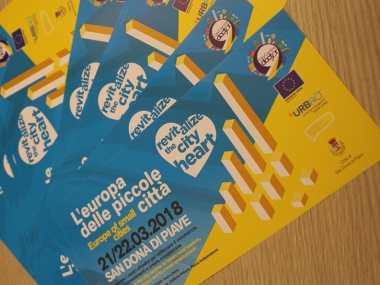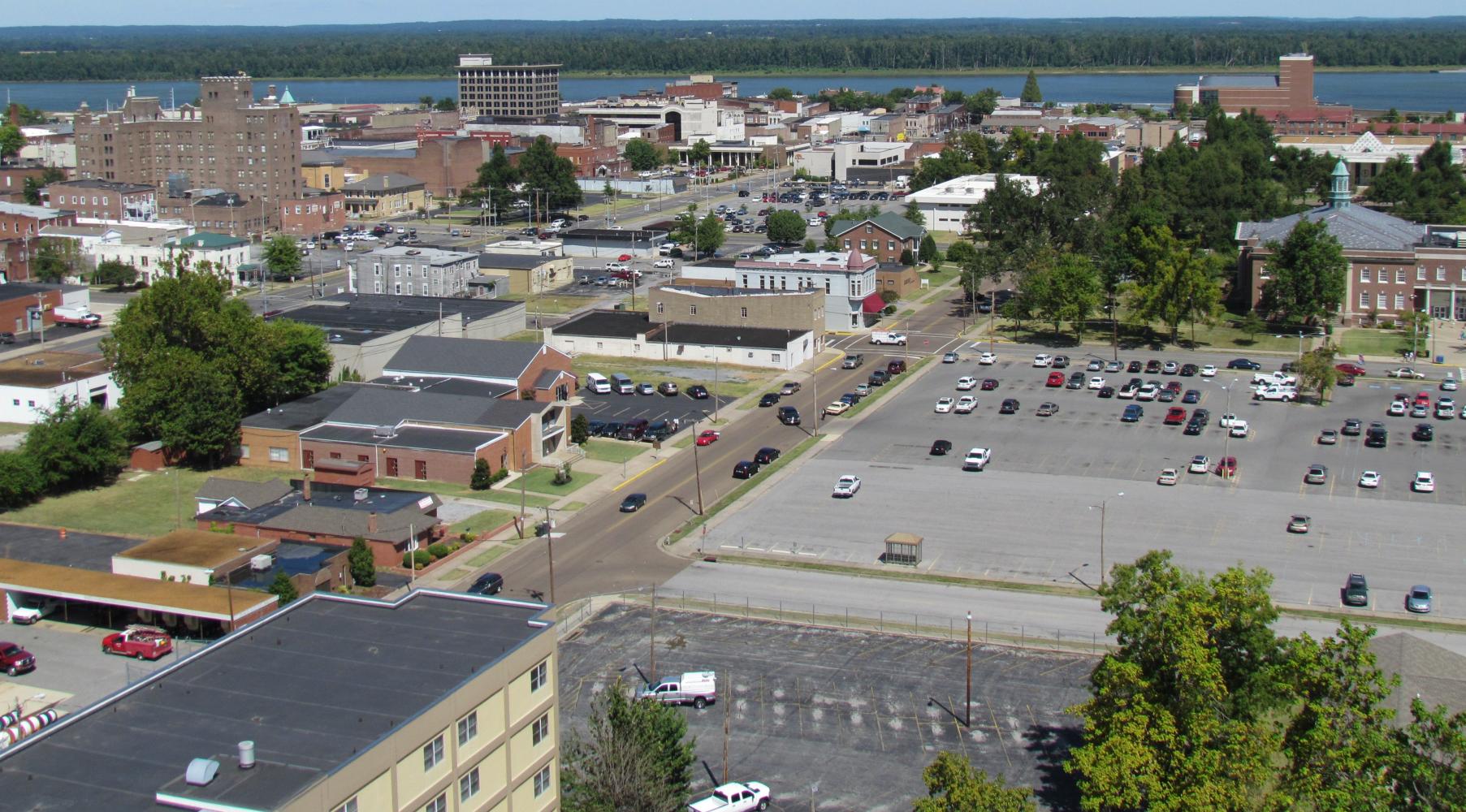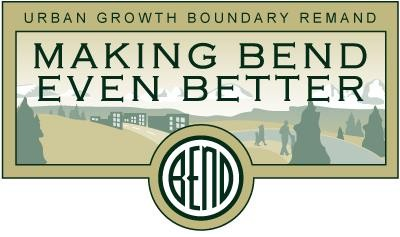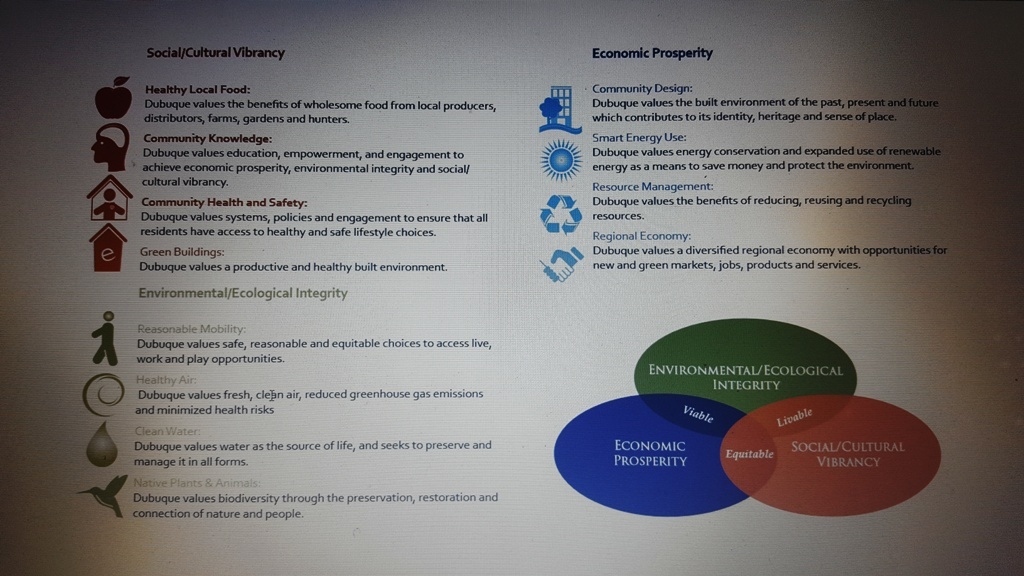Revitalize City Centre | Case study for the CITY CENTRE DOCTOR network
Edited on
13 April 2018by Marco Buemi (ad hoc Expert URBACT)
According to EU officials, cities are expected to play a key role in the implementation of Europe 2020 and its flagship initiatives. Among the main objectives of the EU in the field of Cities revitalization:

According to EU officials, cities are expected to play a key role in the implementation of Europe 2020 and its flagship initiatives. Among the main objectives of the EU in the field of Cities revitalization:
- Smart Growth: Cities as the catalysts for innovation activities. In this sense, the main challenges concern: exploitation of the full potential of information and communication technology for better health care, a cleaner environment and easier access to public services; the development of innovation partnerships for smarter and cleaner urban mobility; the reduction of the number of early school leavers and the support for youth at risk, young entrepreneurs and self-employment.
- Green Growth: energy and industrial policies need to be aimed to strategic, integrated approaches involving local authorities, stakeholders and citizens.
- Inclusive growth: urban policies need to be aimed at fighting social polarization and poverty, avoiding the segregation of ethnic groups, and addressing the issues of ageing thus contributing to an inclusive growth.
According to the mentioned criteria, European cities of tomorrow are places where advance social progress takes place and they should represent platforms for democracy, cultural dialogue and diversity as well as symbols of green, ecological and environmental regeneration thus keeping their role as engines for economic growth.
- How small town can use local assets to rebuild their economies: case studies from the USA
All communities need to find new ways to adapt their industries, technologies, and land use patterns to changes occurring over their territory. Economically resilient towns are those that despite the loss of their original economic drivers find other assets to spur local economies. In most cases resiliency was based on attracting major employers (i.e. manufacturers or large retailer) in depressed areas; even if this strategy showed to be successful in many cases it just move jobs from one place to another. Instead it is crucial to find solutions to create new jobs by putting an emphasis on existing assets and distinctive resources. Several examples from the US describe how small cities faced the change and define some successful tactics as follows:
- Identify and build on existing assets i.e. natural beauty and outdoor recreation, historic downtowns, or arts and cultural institutions.
- Engage all members of the community to plan for the future to ensure the match between a community’s desires, needs, and goals and strategic planning as well as to generate public support, and maintain momentum for implementing changes through election cycles and city staff turnover.
- Take advantage of outside funding to support a community’s vision and plans, to increase local interest and commitment in the area, and to spur private investment.
- Create incentives for redevelopment, and encourage investment in the community by making it easier for interested businesses and developers to invest in the community in ways that support the community’s long-term priorities.
- Encourage cooperation within the community and across the region to achieve jointly established priorities, to help leverage the assets that each party can bring to the table, and to make the most of the region’s resources.
- Support a clean and healthy environment through investment in natural assets, protection of natural resources, cleaning up and redeveloping of polluted properties, productive use of existing transportation, water, and utility infrastructure, increase in the tax base and employment opportunities, removal of environmental contamination.
While small towns and cities can face more significant challenges than their larger counterparts, they also have great opportunities. The case studies show how communities of various sizes can successfully retool their economies to fit the changing economic climate through innovation, their distinctive assets, and a strategic integration between economic activities and what makes a certain place unique. No two communities are the same as they do not face the same challenges and do not start from the same point. Successful tactics must be identified and generalized so to be adapted to different socio- economic contexts around the world.
1.1 Identify and build on existing assets
 Virtually every community has assets that can be part of building a resilient economy. For example Paducah http://paducahky.gov(link is external) a small town in Kentucky, developed a cohesive identity around its artistic and cultural assets, the Ohio river and its rich history thus providing financial and marketing support to cultural institutions which contribute to increase tourism incoming activities.
Virtually every community has assets that can be part of building a resilient economy. For example Paducah http://paducahky.gov(link is external) a small town in Kentucky, developed a cohesive identity around its artistic and cultural assets, the Ohio river and its rich history thus providing financial and marketing support to cultural institutions which contribute to increase tourism incoming activities.
Raonoke in Virginia and Bend in Oregon https://www.bendoregon.gov/home(link is external) focused on becoming outdoor recreational destinations thus attracting new residents, visitors, and entrepreneurs who capitalized on their location by starting related businesses like manufacturing outdoor recreational equipment. Important historic downtowns helped defining communities' identity through distinctive, and historic architecture, shops, restaurants and gathering places. Maintaining the places and institutions that make a community special showed to be an effective tool in creating a sense of place and neighborhood identity helping retain residents and attracting new ones as well as business men. Downtown revitalization strategies include reducing vacancies, providing incentives to fix building façades, improving streetscapes, and creating parks and greenways. Community assets are also represented by government agencies, private business, non- profit organizations, and community institutions. 
In Raonoke, Virginia, Carilion Health Systems, Virginia Tech and the University of Virginia have invested to redevelop former rail property close to downtown and to create a new economic engine for the city. An asset mapping can identify strengths the community can build on and assess their potential to catalyze development.
1.2 Engage all members of the community to plan for their future
A crucial role in retooling a community's economy is to engage residents, business owners and stakeholders to develop a common vision and to reflect the community's desires, needs, and goals into a common plan. The example in this case comes from Duburque, Iowa, where a stakeholder- driven planning process identified 10 high- impact projects for the city http://www.cityofdubuque.org/DocumentCenter/View/284(link is external)
 The selection process involved tens of thousands of people submitting their ideas to be chosen by community members thus providing credibility among donors and residents. Roanoke, Virgina launched an extensive public participation process in 200 to develop a vision for the future. The so-called Vision 2001- 2020 https://www.roanokeva.gov/1160/Vision-2001-2020(link is external) city's comprehensive plan incorporated a citizens' advisory committee, citizen task teams, city staff, consultants, the planning commission, city council, and the public.
The selection process involved tens of thousands of people submitting their ideas to be chosen by community members thus providing credibility among donors and residents. Roanoke, Virgina launched an extensive public participation process in 200 to develop a vision for the future. The so-called Vision 2001- 2020 https://www.roanokeva.gov/1160/Vision-2001-2020(link is external) city's comprehensive plan incorporated a citizens' advisory committee, citizen task teams, city staff, consultants, the planning commission, city council, and the public.
1.3 Create incentives for redevelopment, and encourage investment in their community
Another successful strategy to re- boost a community's economy is to make it easier for interested businesses and developers to invest in the community and to support the long-term priorities. In order to facilitate private sector investment development process can be streamlined, providing technical assistance, and creating informational guides. For example, town leaders in Emporia, Kansas, partenered with Emporias's main Street Program http://www.emporiamainstreet.com(link is external) to create a code team bringing together code officials, firefighters, engineers, and zoning staff to meet with business owners to assess and clarify all requirements. While Douglas, in Georgia, created a guide for sharing and growing a business that outlines local resources, permitting and zoning processes, tax policies, and steps to get the loans (http://douglasga.org/pdf/HowToStartABusiness.pdf).
1.4 Encourage cooperation within the community and across the region
Cooperation within the community and across a certain region has shown to help leverage the assets that each part can bring to make the most of common resources. On the contrary, competition over limited resources leads to undermine a community or region attempt to generate durable economic growth. For instance, Mount Morris, New York, has exploited his proximity with the State University of New York Geneseo to enlist students help in its revitalization effort https://roccitynews.wordpress.com/2012/07/18/development-the-mt-morris-miracle(link is external) Students have been involved in many activities like beautification projects, and publicity about community events. The city of Roanoke and the Roanoke Redevelopment and Housing Authority http://www.rkehousing.org(link is external) assembled 23 acres of former industrial properties and conducted environmental site testing to improve public utilities, streets, and drainage. After doing so they sold the site to Carilion Health Systems in partnership with Virginia Tech and the University of Virginia to establish the Carilion Biomedical Institute. More information on land revitalization in the US: https://www.epa.gov/brownfields/brownfields-and-land-revitalization-delaware-maryland-pennsylvania-virginia-west(link is external) 
1.5 Support a clean and healthy environment
A community investing in the protection of its natural resources can better attract residents, tourists, and businesses who value clean air and water as well as natural landscapes. Cleaning up and redeveloping polluted properties makes productive use of existing transportation, water, and utility infrastructure. It also increases the tax base and employment opportunities, removes environmental contamination thus helping increasing investment in surrounding properties. Dubuque, for example made sustainability the city's top priority and established 12 principles that guide city operations and community development plans, including the city's comprehensive plan, long-range transportation plan, and comprehensive economic development strategy http://www.cityofdubuque.org/DocumentCenter/View/284(link is external) Nourishing an environmental vision within the community helps locals to create a legacy for generations to come through economic prosperity, environmental protection, and cultural vibrancy. The tactic in this sense is not just to support economic development, but also smart growth and to adopt an approach to community that protects the environment and public health, creates strong neighborhoods with diverse housing and transportation options, and improves residents quality of life. Last but not least compact, diverse, and walk able development can increase property values and property tax revenues, encourage job creation, reduce housing and transportation costs, and create amenities and places that attract and retain residents.
2. Latest research shows how urban design can influence citizens’ participations and engagemen
Last June the Center for Active Design (CfAD) released the original research findings from the Assembly Civic Engagement Survey (ACES), the first study to examine specific community design features that influence civic life https://centerforactivedesign.org/assembly-civic-engagement-survey(link is external)
 ACES collected data from over 5.000 respondents across 26 cities in the USA chronicling their attitudes about neighborhood appearance and its impact on safety, trust and engagement, and representing a cross section of economic conditions, demographics, and population densities. The study findings suggest that a direct cause effect relationship between better civic spaces and better behaviors by citizens exists: safer, healthier, and more accessible neighborhoods breed better attitudes. Positive attitudes foster participation, and empower the public to take part in the electoral process to shape their neighborhood. Also, the results of the survey suggest that effective change does not require massive interventions but a focus on small improvements that make people feel safer and more welcome. The major aims of the study are to understand the connections between the design of public spaces and buildings and to create a toolbox for planners and politicians to make decisions improving civic pride.
ACES collected data from over 5.000 respondents across 26 cities in the USA chronicling their attitudes about neighborhood appearance and its impact on safety, trust and engagement, and representing a cross section of economic conditions, demographics, and population densities. The study findings suggest that a direct cause effect relationship between better civic spaces and better behaviors by citizens exists: safer, healthier, and more accessible neighborhoods breed better attitudes. Positive attitudes foster participation, and empower the public to take part in the electoral process to shape their neighborhood. Also, the results of the survey suggest that effective change does not require massive interventions but a focus on small improvements that make people feel safer and more welcome. The major aims of the study are to understand the connections between the design of public spaces and buildings and to create a toolbox for planners and politicians to make decisions improving civic pride.
The survey inquired about respondents' civic perceptions and behaviors and about design elements and maintenance conditions in their communities that brought to the collection of data to measure the relationship between public spaces and civic life. In order to explore the casual impact of design elements on civic perceptions an innovative photo experiment was adopted. The technique chosen for submitting the surveys was not to present respondents with two options which would have led them to pick the more appealing image but to show one and ask if they would have been available for that specific one. This methodology made it easier to gauge real intent and measure the impact of slight changes. The topics analyzed by the survey were three: park design and maintenance, neighborhood order (or disorder), and welcoming city spaces and buildings, considering design decisions at every scale. The mentioned main topics served as basis for researchers to organize the findings and to translate them into easy- to focus resource for local implementers and decision- makers. Highlights include:
- Greater community connection and greater satisfaction with local authorities is reported among people living near parks.
- Litter is associated with depleted civic trust.
- Vacant lots present a challenge, and an opportunity.
- ACES findings show how small improvements in design can make a difference in civic perceptions.
The research findings provide both decision makers and the citizens with data showing that affordable actions can radically shift negative attitudes without extensive investment and political capital. This means that it is not necessary to drastically change and rethink the community as a whole. In short, disorder erodes civic trust while putting order leads to the adoption of a positive perception of government and people willing to help each other in the community and to foster strong social bonds and resilience. Ultimately, the research aims to give planners a rationale for their actions. Putting planters in the middle of a street does no longer represent a way to make the street look more beautiful: now it has been demonstrated that it may bring more shoppers to a commercial strip thus increasing the chances to increase sales, tax spurs action and innovation. Planters and bushes in front of a police station may encourage interactions between the police and the community and help change their image thus increasing reporting and collaboration.
The release of the report represents the basis for further studies and concrete applications. Actually the Center for Active Design is currently working with a small group of planners and local officials in US cities to use the findings to create guidelines and best practices.
By Marco Buemi
 Submitted by Alberto Ferri on
Submitted by Alberto Ferri on
